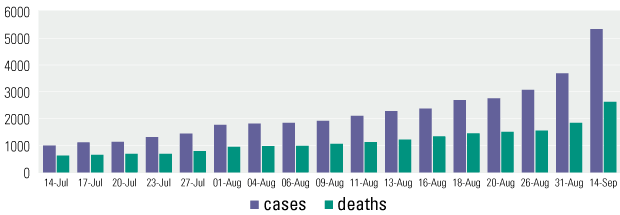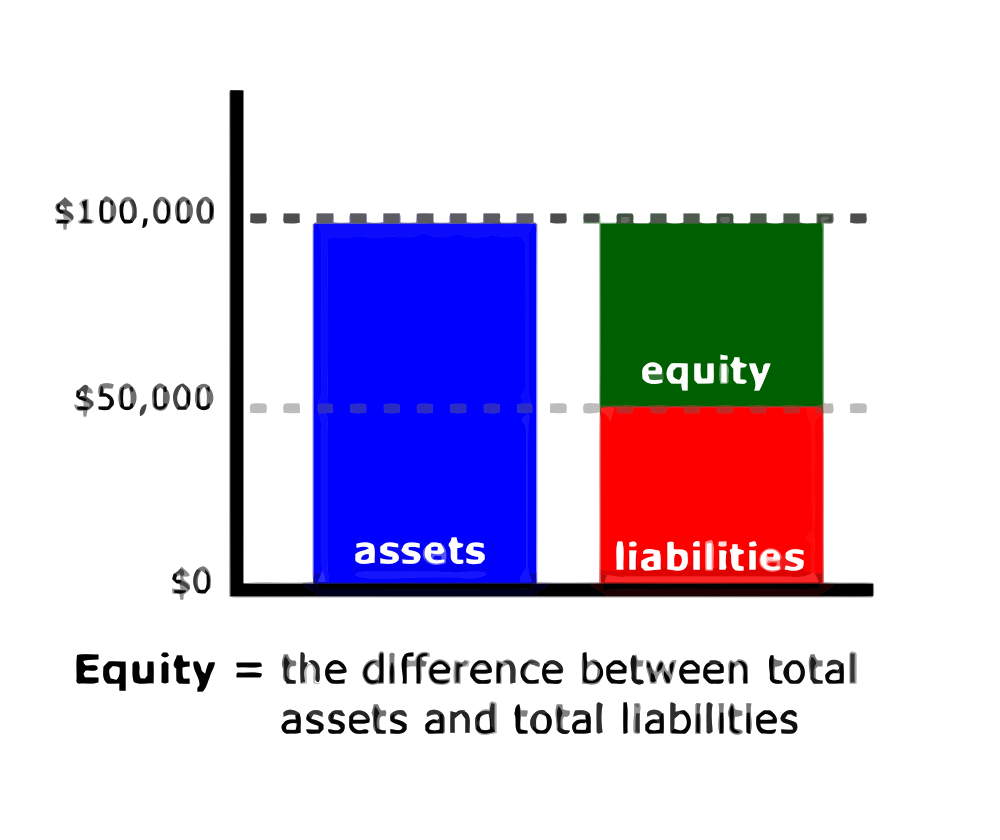Ebola, the tipping point
by Eric Sprott, Sprott Asset Management
We are currently in the midst of the largest ever Ebola outbreak in Western Africa, and this could just be the beginning. The number of cases and deaths has risen steadily, from a handful of people in Guinea at the end of March 2014 to several thousand now (Figure 1), not only in Guinea, but in Liberia, Sierra Leone, recently extending to Nigeria and the Democratic Republic of Congo (DRC).1
A key metric to understand just how severe the epidemic can become is the basic reproductive rate, or R0, which measures the number of cases an infected patient generates while he is in his infectious period.2 A 2007 research paper by epidemiology experts at the “Université Pierre et Marie Curie” in Paris have found that Ebola has a R0 of about 2.7, which means the number of cases can multiply at a very fast pace.3 One of the key recommendations from the study is to implement control measures rapidly to prevent the spread of the epidemic. They say that increasing hospitalization rates significantly reduces the predicted epidemic size.
Unfortunately, the world’s response to this crisis has been nothing short of underwhelming; according to the World Health Organization (WHO), the seriousness of this Ebola crisis has been “underestimated” by authorities, meaning that they really have no idea of how many people are currently infected.4 More recently, the WHO declared that if left unchecked, the epidemic could affect over 20,000 people within 9 months.5 In reality, it could be even more given the historical R0 of the disease and the lack of proper health care infrastructure.6
Not surprisingly, people have been “hiding infected loved ones” and many refuse to enter those isolation wards, which are viewed as incubators. Also, the WHO mentions the existence of “shadow-zones”, referring to villages with rumors of Ebola that cannot be investigated because of community resistance or lack of resources.
Figure 1: Confirmed, Probable, and Suspect Cases of Ebola (Guinea, Liberia, And Sierra Leone)

Source: World Health Organization.
To compound the problem, these West African countries already had difficult access to health care professionals and equipment. For example, the WHO estimates that in the three hardest hit countries, thereare only one to two doctors per 100,000 people.7 (By contrast, in the U.S. there are about 250 doctors per 100,000 people.8) Not only do they have few doctors, but they are terribly ill equipped; the WHO writes that “medical staff are at risk because no protective equipment is available – not even gloves and face masks”. The result is an unprecedented number of medical staff infected and dying from Ebola. In fact, so many are dead already that staff refuse to come to work, resulting in the closing of health facilities. Also, it reinforces the view in the general population that health centers are Ebola incubators where they would certainly die.
All these factors are creating an atmosphere of fear and social stigma for those infected. This is best exemplified by recent events in the Monrovia (the capital of Liberia) slum of West Point. According to some estimates, at least 50,000 people live in West Point in absolutely abject conditions of insalubrity.9 On August 16th, West Point residents went on a “looting spree” at an Ebola clinic, taking with them mattresses, sheets and equipment that had been soiled with bodily fluids that are known to spread the disease. Approximately 30 Ebola patients at the health center fled during the raid. Just a few days later, authorities in Monrovia established a quarantine on all of West Point.10 This area of 50,000 inhabitants has now become an incubation hub for the disease. This shows the total lack of control of authorities. Even with the slum cordoned off, it is most probable that people will leave, doing what they can to protect their own purpose, spreading the disease in the process.
This is exactly how Ebola spread to Nigeria; a nurse who treated Patrick Sawyer (an Ebola-infected Liberian that was flying to Nigeria) disobeyed the authorities and decided to visit her husband in a nearby village, spreading the disease further.11
Now, in light of all this, it is rather puzzling that the WHO would recommend “no ban on international travel or trade”, but at the same time instruct countries to be prepared to detect, investigate and manage Ebola!12 Clearly those countries in West Africa are already having trouble with regular health care, why would the WHO assume that they can put in place all these controls. This is completely foolish. Indeed, many African countries have already closed their borders to infected areas to try to slow the spread of the disease.
After more than 6 months, the West is finally reacting by promising some much needed help. The seriousness of the situation is finally being recognized by the authorities; the WHO has been steadily increasing their estimate of the funds needed to slow the epidemic, from $100M a month ago to over $1B now13. The tone is also changing, with the WHO’s Director-General recently calling this Ebola event the “greatest peacetime challenge that the United Nations and its agencies have ever faced.”14
There is no way for authorities to predict and control what people will do in extreme circumstances. They will act in the way that, at the time, seems best for them. Combine this with the WHO’s encouraged laissez-faire vis-à-vis air travel and you have a potentially explosive situation. Already, scientists at the U.S. Centers for Disease Control and Prevention estimate that by January 2015, the number of cases could be as high as 1.4 million.15 At some point there will simply not be enough medical staff. Did we already pass that tipping point?
While Ebola transmission is not airborne yet, that doesn’t mean it will remain contained in Africa; the virus doesn’t know where borders are.
I suggest you think very, very hard about this…
1 http://www.cbsnews.com/news/ebola-spreads-in-nigeria-2-new-cases-unconnected-to-patrick-sawyer/
2 http://www.reuters.com/article/2014/08/25/us-health-ebola-congodemocratic-who-idUSKBN0GP15T20140825
3 http://en.wikipedia.org/wiki/Basic_reproduction_number
4 See their article here: http://www.ncbi.nlm.nih.gov/pmc/articles/PMC2870608/
5 http://www.who.int/mediacentre/news/ebola/22-august-2014/en/#
6 http://online.wsj.com/articles/ebola-virus-outbreak-could-hit-20-000-within-nine-months-warns-who-1409226146
7 http://news.sciencemag.org/health/2014/08/disease-modelers-project-rapidly-rising-toll-ebola
8 http://www.who.int/mediacentre/news/ebola/25-august-2014/en/
9 http://data.worldbank.org/indicator/SH.MED.PHYS.ZS
10 http://www.ibtimes.co.uk/ebola-outbreak-photos-fear-panic-liberian-forces-seal-west-point-slum-contain-disease-1461985
11 http://www.cbc.ca/news/world/ebola-clinic-looted-by-liberian-slum-residents-1.2738868
12 http://www.bbc.com/news/world-africa-28865632
13 http://nigeriantimes.ng/news/nigeria-deploys-ebola-trial-drugs-today/
14 http://www.nbcnews.com/storyline/ebola-virus-outbreak/ebola-surge-obama-announce-military-led-fight-n204106
15 http://www.nbcnews.com/storyline/ebola-virus-outbreak/who-orders-global-response-ebola-death-toll-climbs-2-500-n204241
16 http://www.who.int/dg/speeches/2014/security-council-ebola/en/
17 http://www.webmd.com/news/20140923/ebola-cases-could-reach-14-million-in-months-cdc-predicts
18 http://www.cdc.gov/mmwr/preview/mmwrhtml/su63e0923a1.htm?s_cid=su63e0923a1_e
Copyright © Sprott Asset Management














